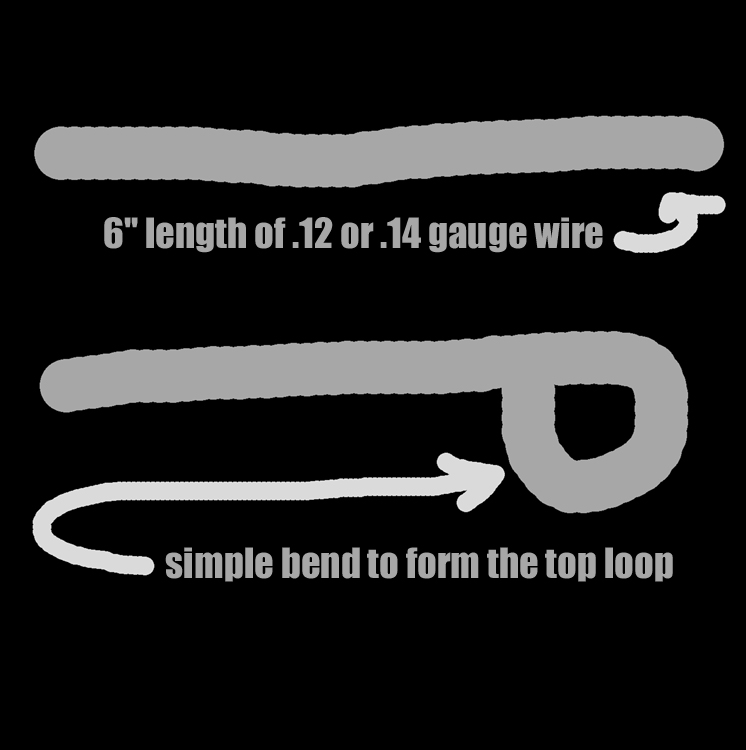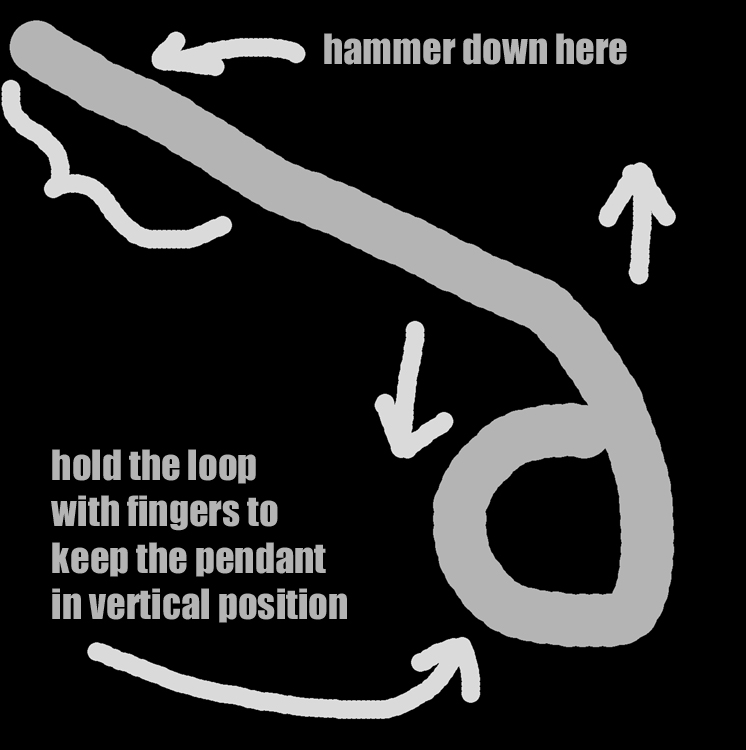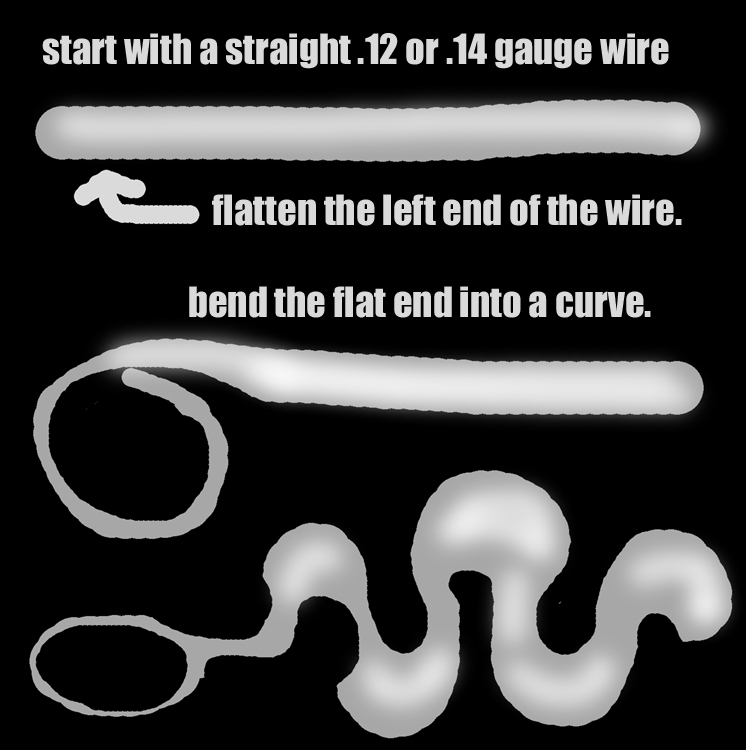
It’s easy to make a pendant from a single piece of wire. Later, we’ll see how to use several pieces of differing dimensions to create a more complex form, but here’s the simple solution to a real Iron-Age Pendant.
Start with a 6 inch length of .12 gauge or .14 gauge wire.
With your needlenose pliers, gently COAX the wire into a nice, wide loop, big enough inside to accommodate not merely a chain, but the clasp of a chain as well. Like I said, big, roomy, lots of space in there.
Now that you’ve made a loop, check to see if there’s any opening, any crack or crevice. If there is, place the loop on your anvil or steel hammering plate and GENTLY tap the loop closed, making certain to keep the balance just right, so the loop doesn’t go sideways or get twisted up or mangled.
Insert one tip of your needlenose pliers into the loop, and clamp down GENTLY on it to hold the piece in place.
Start bending the wire in wonderful shapes, but make sure it’s always at a 90 degree angle ACROSS the top loop. Imagine the piece on a chain, to see how to bend and hammer it. Here’s an illustration of how to do this operation:

You must keep the loop in vertical position while hammering the pendant’s bottom part. If you bend the piece before you hammer it, here’s how to proceed:

Just bend the wire with your fingers if possible, using the needlenose pliers sparingly as a GUIDE, not forcing the metal in any way.
If you want to flatten certain areas, you can do that by placing the pendant face down on the steel hammering block or anvil, and GENTLY but PERSISTENTLY hammering with your tiny 2 ounce ball-pein hammer, watching constantly as the metal forms new shapes and boundaries, going no further than is wise.

When you hammer out a curved piece, you want to enlarge or flatten the CURVES, not the straights. If the straight parts are bending, you can gently hammer them lightly, just enough to prevent them from bending. The hammer-strike heats up the metal sufficiently to cause a slight increase in rigidity, a slight crystallization effect that is good for our needs.
If you want to curve the hammering, wait until later on, when you know more. For now, just get the regular hammering down.
One variant that you might want to use is the hammered Bail Loop. Here’s how you do this:

This creates a very interesting effect, but you must be careful not to reduce the size as I’ve done in the illustration — this was to exaggerate the effect so you could see it well enough to get the idea.
Don’t forget that whatever loop you put in, the design is 90 degrees across that, so the chain and the pendant are aligned on the same plane. If that’s not happening, you need to take a remedial workshop, and fast, before you destroy all your silver.
See You At The Top!!!
gorby

